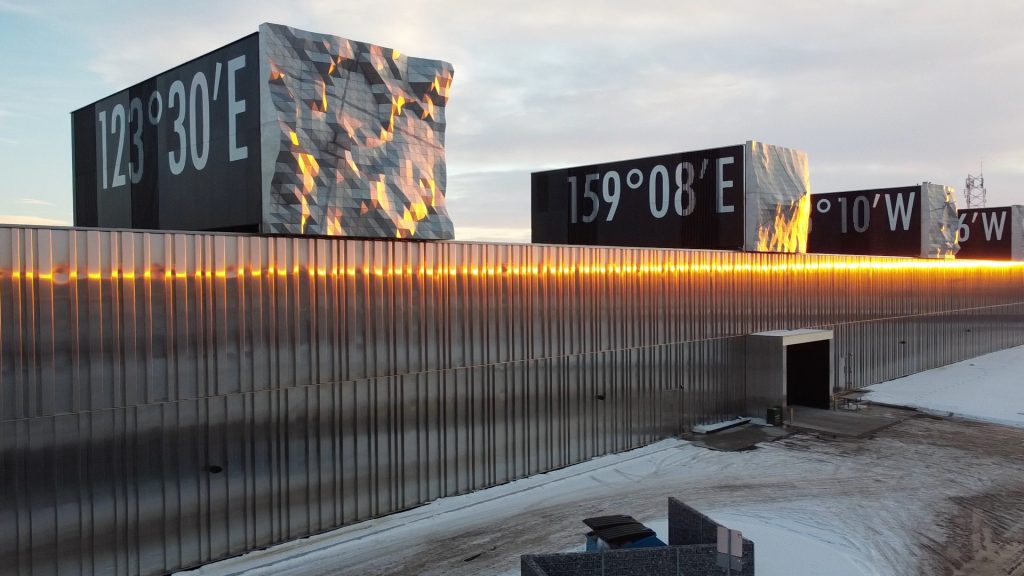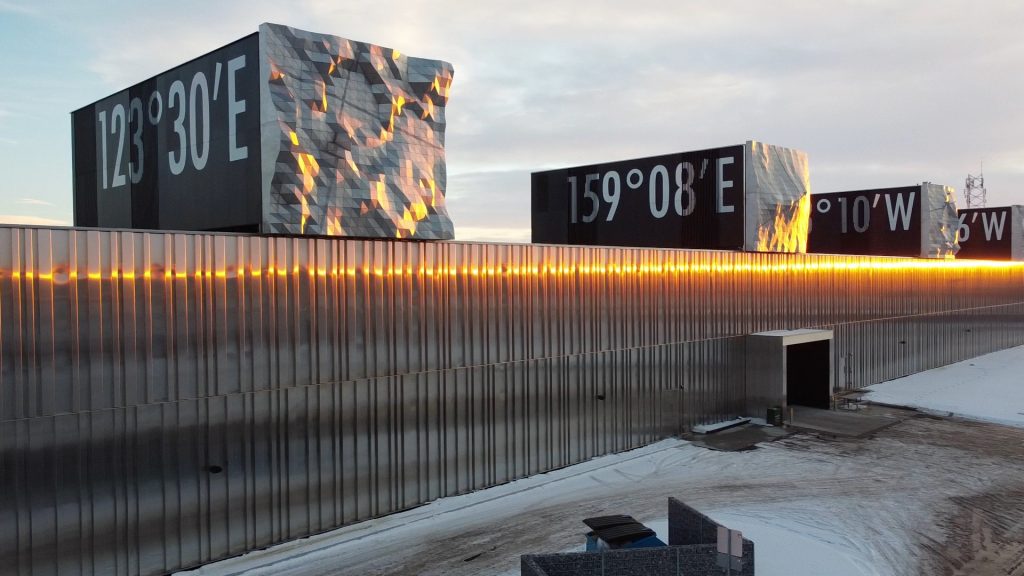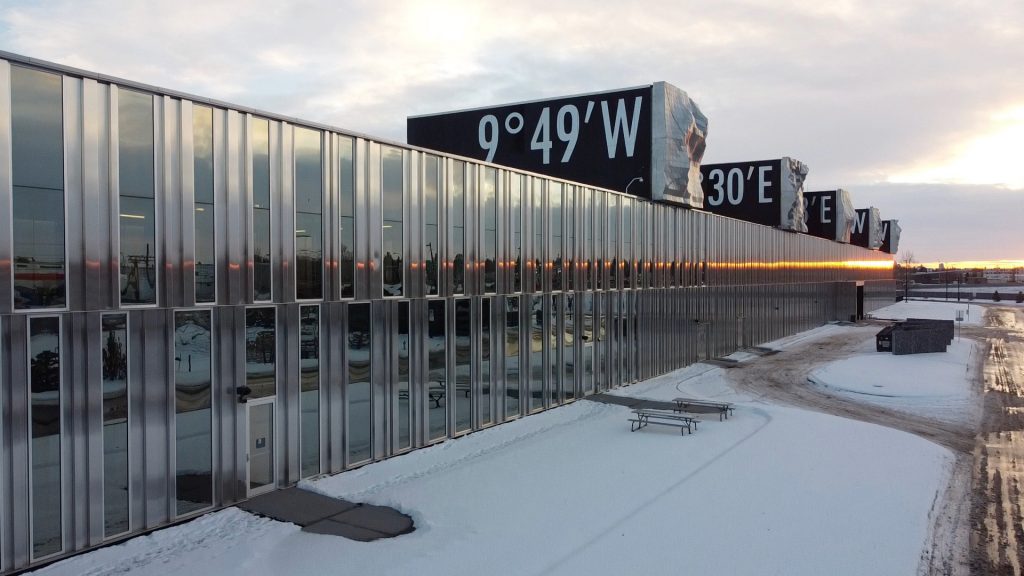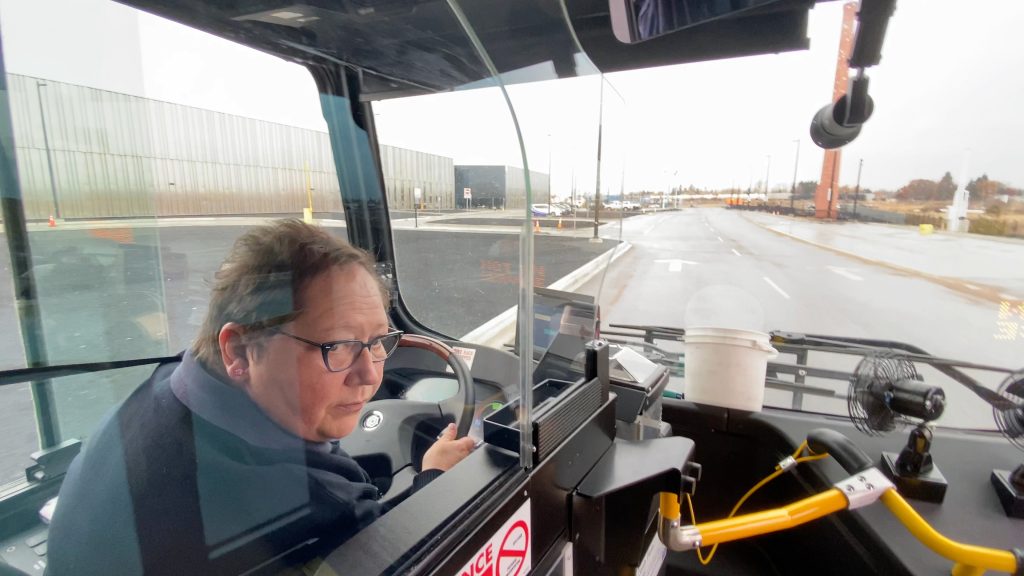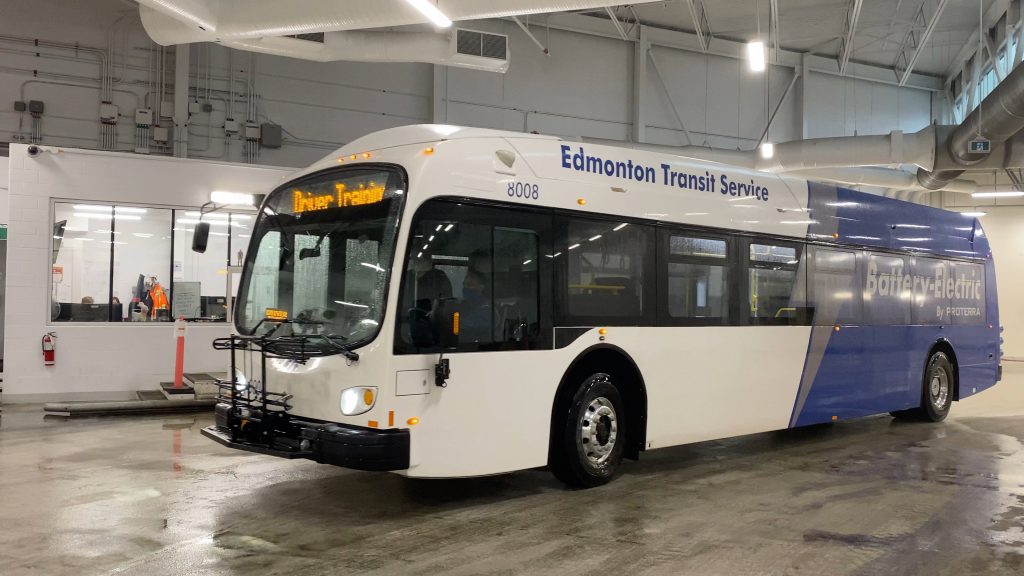
By David Dodge and Kay Rollans
Electric vehicle aficionados know that modern EVs are some of the fastest, most powerful vehicles on the road—and becoming more so all the time.
Another thing they know? At this point in the electric transition, electric infrastructure is just as important, if not more so, than the vehicles themselves
Eddie Robar, the guy behind Edmonton Transit’s electric transformation, couldn’t agree more. “I always say to everyone … the buses are the easy part of this conversation … If we want to make serious progress with electrification of bus fleets, it’s really about the infrastructure.”
And Edmonton Transit has infrastructure. The Kathleen Andrews Transit Garage is a striking giant of a horizontal structure, featuring a façade of stainless-steel vertical ribs and glass.
The architect, gh3*, compares the building design to a ribbed tin can rolled on its side—and while, yes, this does work perfectly to describe the motif, it doesn’t do a lot to communicate just how cool this building really is.
Robar took me on a tour of the new bus barns, a vast facility with room for 275 buses, including up to 30 electric buses. We toured the inverter rooms, which take AC electricity and covert it to DC. High-speed chargers are coupled with 600-volt lines that run along the ceiling as they take this DC electricity from the high-speed chargers to the 22 overhead pantograph charging systems in the bus bays.
As well learned in our previous story it takes on average only about one hour per day to charge each bus because the long-range electric buses are going “out for a 14-hour shift and coming back with a 65 to 70 per cent state of charge,” says Eddie Robar, Edmonton’s transit boss.
The building also contains batteries to store electricity—another cost-saving measure. This way, Edmonton Transit can buy electricity when it’s cheap to power the e-buses helping optimize cost-effectiveness. The roof was also built to accommodate solar, which may be a future addition.
“Any day it rains is a good day for Edmonton Transit,” said Robar. In the basement, there is a 1.5-million-liter water tank that collects rainwater. The system provides nearly all of the water needed to wash buses which saves on water and sanitation costs as well.
53 Degrees 30 North – Big art on big bus barns
The Kathleen Andrews Transit Garage is more than just an intelligently designed, cost-saving piece of transit infrastructure. It’s also a piece of art—literally. On the roof is a series of black, rectangular shapes resembling sea containers.
“Actually, they’re not sea containers,” Robar explains. “This is an art installation right here. And that art installation really represents the topography of four different places at the same latitude as the city of Edmonton and this transit garage.”
Edmonton’s Percent for Art Program supports the acquisition of public art by allocating one per cent of eligible construction budgets on municipal infrastructure to public art. This art installation—53 Degrees 30 North—was acquired and built through the program.
The installation is quite striking and started catching attention long before the facility was finished. The artist, Thorsten Goldberg, is from Berlin. He says the art was inspired by the “globe game”: simply taking a globe, spinning it, and letting his finger land on different locations around the world, all located at the same latitude (about 53°N) as Edmonton.
53 Degrees 30 North is a collection of six such locations, depicted as three-dimensional topographic models: Mount Chown in Alberta, Mount Okmok in the Aleutions, Zhupanovsky Crater in Russia, an unnamed landscape in Dacaodianzi, Heilongjiang Sheng in China, and Mweelrea in Ireland.
Robar says “it’s a pretty exciting piece for us” that adds a bit of “flair” to the bus barns.

Namesake – Kathleen Andrews Transit Garage
As we took a spin around town on an Edmonton Transit e-bus, we got to know more about Kathleen Andrews, after whom the transit garage is named. Sandra Carette, our driver and a seven-year driver for Edmonton Transit, told the story.
In January 1975, Kathleen Andrews became the first female bus driver in Edmonton. She always carried a dime to make emergency calls at phone booths.
“She faced drunken louts trying to pick her up, male colleagues who questioned her ability to drive and both female and male passengers who refused to board her bus because she was a female driver,” say the historical documents from Edmonton’s naming committee.
Andrews persevered and worked in numerous roles with Edmonton Transit until she retired in 1998. She died on November 17, 2013, at 73 years old.
“[S]he paved the way for us women to be able to do what we do now and that’s drive these buses and have wonderful careers with Edmonton Transit,” said Carette. “It was a hard slog for her, but because of her, we now have lady bathrooms” she laughed. And, thanks in part to her, “here we are driving this wonderful electric bus.”
UPDATE June 3, 2021 – In June 2021 Edmonton secured 20 more electric buses bringing the total to 60 due to support from the Canada Infrastructure Bank.
“The success of our economy, public health, and quality of life all depend on Edmonton making a shift to a low carbon future which is why this investment by the Canada Infrastructure Bank is so crucial. In addition to supporting our economic recovery, this investment in zero-emission public transit and greener buildings helps ensure Edmonton is making tangible gains in its goal to become a competitive, low-carbon City of the future,” says Mayor Don Iveson in the announcement.

